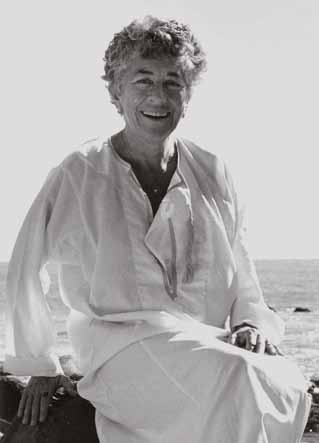Savina Teubal grew up in Buenos Aires in a tight-knit Syrian Jewish community. Her father and his family emigrated from Syria directly to Argentina; her mother’s family emigrated from Syria to England before going to Argentina. Savina explained what it meant to grow up in such a community:
“[T]hey all brought with them the Jewish-Syrian culture of their ancestors. We ate Arabic food, listened to Arabic music, and spoke Arabic mixed with Spanish, French, and English. But we all prayed in Hebrew.”
As Rabbi Sue Levi Elwell explains, “Savina became her own woman as she made her way to England and then to America, applying her natural understanding of the imperative of social activism and community building to create connections in her new home. In her thirties, she began to study, and claimed as her own the biblical legacy of her people. Her groundbreaking work, Sarah the Priestess (first published in 1984), was Savina’s first gift to the world. Her reading of the Hebrew Bible’s account of the first matriarch opened hearts and minds to the power of women’s stories in shaping a collective consciousness. Her pioneering work opened the way to teachers, rabbis, and writers across the world to create midrash [interpretation] that would enable modern readers to reconsider the biblical narratives as living stories of real women and real choices. In 1990, her readers welcomed her second book, Hagar the Egyptian. Anita Diamant might never have imagined The Red Tent without Savina Teubal’s work, and thousands who have returned to Judaism were beckoned by her recasting of ancient narratives that illuminate contemporary dilemmas.”
Savina did not confine her activities to writing. In her own words, “I felt I still needed to participate in that part of Jewish ritual that had been denied me as a woman. In lieu of a bat mitzvah, I decided to create a rite of passage to celebrate the beginning of the last phase of my life, rather than the end of it. I called the ritual Simchat Hochmah (the Joy of Wisdom). The ceremony reflected events in the life of the Matriarch Sarah but also included my leading a Shabbat morning service, embracing the Torah scroll, reading from the Torah, and wearing a tallit (prayer shawl). I also changed into a kittel (white robe used as a shroud) during the ceremony because I wanted to acknowledge that I was on the journey to the end of my life. Since that time I have written and lectured on women in the Bible as well as about the importance of leading a vital and fulfilling old age.”
Savina’s role in the Los Angeles Jewish community was groundbreaking. An indication of her importance is the establishment of the Savina Teubal Chair for Distinguished Visiting Professor at the The Academy for Jewish Religion, California.
Savina was a longtime member of Beth Chayim Chadashim, the first gay and lesbian synagogue, and its rabbi, Lisa Edwards, was among Savina’s inner circle. She describes Savina’s reaction to her recommendation to meet Rabbi Carla Howard of the Jewish Healing and Hospice Center. “It took Savina a day or two to think about it. Rabbi Carla came with me to see Savina…. I have been with many people in their dying but this was the first time where I brought someone on my recommendation and I think Savina and Carla were able to have a very comfortable talk from the beginning of their visit. This is part of who Carla is…. Savina had been the leader of a spiritual community— it was good for her to have someone else to talk to who was familiar with Jewish tradition and community.”
Rabbi Edwards adds, “Jewish Hospice is what allowed Savina to say yes [to hospice]—true for a lot of people. Rabbi Howard was able to be a model, a witness, using a vocabulary that the person understood very well…. Savina was having difficulty with long term health care and Rabbi Howard was able to weigh in as a skilled professional and navigate the health care red tape.”


